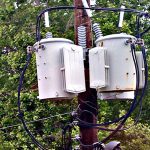Solar Mini Grids Could Power Half a Billion People in 10 Years

Image courtesy of Jonathan Cutrer under Attribution-NonCommercial 2.0 Generic License, resized to 700 x 391 pixels.
There is no doubt about it, between climate change, clean energy goals, population growth, and increased government scrutiny around “dirty” power sources, the electric utility industry needs to produce more supply, especially renewable energy. And so-called solar mini grids could be just what the proverbial doctor ordered.
Why Solar Mini Grids Make Sense for Electric Utilities
Solar mini grids could be the solution to plugging several emerging energy supply gaps. In fact, a new report concludes that these structures could provide power to half a billion people by 2030, which is less than 8 years from the time of this writing.
They could help electric utilities meet clean energy goals when building giant solar or wind farms is not financially viable. They could also plug the energy access gap – for example, nearly 750,000 people in Africa alone do not have access to electricity, a problem that could be partially solved by deploying these structures in these areas.
That said, deploying large numbers of these small solar structures is easier said than done, and will require collaboration between not only industry players, but countries and governments as well. It will also require the development of new financing solutions, as well as incorporation into national electrification plans.
Despite the challenges, they do have one huge advantage over the development of other power sources – the cost. Simply put, it is much cheaper to develop one of these mini grids than it is to build an entire solar farm, wind farm, or power plant. And the cost profile should decline even further in the coming years, thanks to the growing number of developers entering the fray, falling costs due to economies of scale, and the introduction of new digital solutions that enable remote monitoring.
In the final analysis, solar mini grids are an intriguing solution to some of the more pressing issues within the industry, and my hope is that one day their potential will be fully realized.



